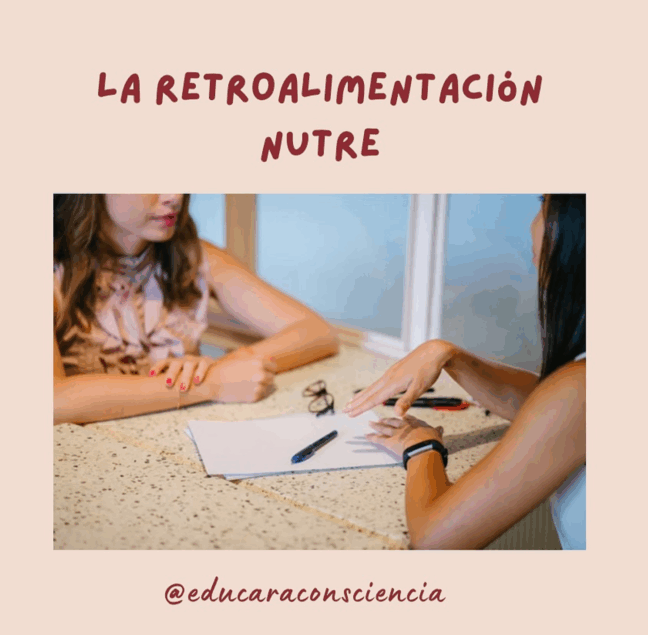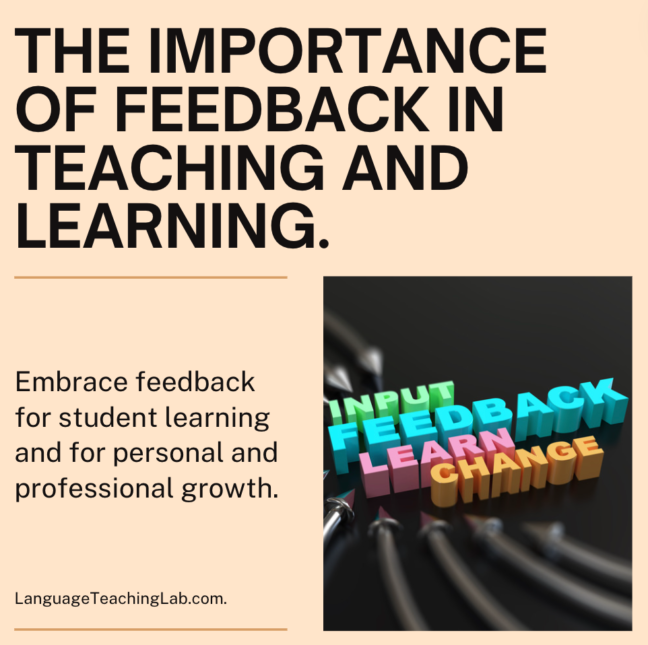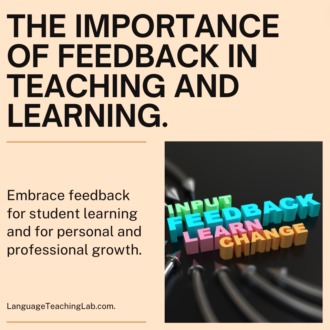by Noemí Rodriguez (LTL Contributor)
Feedback is essential to the learning process, whether we seek it or we receive it.
Learning and teaching are incredibly dependent on feedback. What opportunities do you provide for your students to receive feedback and reflect? And, as an educator, how do you seek feedback from your colleagues, administration or students to enhance your lessons?
In my classroom, I create opportunities for students to receive feedback through individual conferences, peer review activities, and self-assessment exercises. This allows them to reflect on their strengths and consider actionable next steps to assist themselves in their language development. And, as a language educator, I actively seek feedback from my colleagues, administration, and my students to refine my teaching methods and ensure my lessons are engaging and effective.
Feedback for Teachers
Teachers can welcome their students at different points in the year, to share their own (anonymous) comments about how the class is organized and running. Teachers can set up online surveys or a Google form, to have this feedback take place in an environment where students feel comfortable to share their honest opinions.
Another idea that comes to mind is with a professional development model of teachers learning from teachers. Using whichever evaluation model a local district has put into place, teachers can observe each other’s lessons and provide realistic feedback as to what they feel went well during the lesson and what maybe did not go so well. Teachers can help each other by targeting specific goals that they may have for themselves. Teachers can also learn new strategies and techniques from each other, by watching model lessons and providing constructive criticism to one another.
When you create an environment that is structured around meaningful feedback it also involves self-reflection. As teachers begin to reflect on their own practices, they can provide feedback to themselves by taking a closer look at their lessons, assessments and techniques used to engage student learning. Posing a different question/comment each month for a teaching staff to consider, may be a good starting point. Then, allowing for the articulation of these self reflective ideas & practices during department meeting time, may allow for these professionals to really make meaning of what they do each day and realize whether or not it is deemed to be effective or how it can be improved.
*The TELL Project also offers an array of self-reflection tools for language educators.
Feedback for Students
Providing one on one feedback to our students is so valuable to their learning and progress in language proficiency. In a world language classroom, rich feedback goes beyond simply correcting grammar mistakes. It offers specific and actionable guidance. When a teacher can pinpoint exactly where a student stumbles, they can provide targeted suggestions for improvement. This might involve recommending vocabulary that better expresses the student’s intended meaning, or suggesting alternative sentence structures for greater clarity.
I often ask students to be self reflective in their study of the language at the beginning and at the end of a unit of study. Rich feedback also acknowledges strengths and celebrates progress. By highlighting areas where a student shines, the teacher fosters confidence and motivates continued effort. This well-rounded approach to feedback empowers students to become more strategic and self-aware language learners.
AI Tools
There are now several AI Tools that can assist language teachers provide rich feedback to students.
Briskteaching – Under the “Feedback” tab, teachers can use Targeted, Glow & Grow, Rubric Criteria or Next Steps as different ways to provide feedback on written submissions
Curipod – Check out the AI generated feedback & reflection components that can be added to slides
Microsoft Immersive Reader or HelperBird Chrome Extension – Both tools provide students the opportunity to listen, practice reading out loud and gain feedback on their pronunciation skills
Mizou – Generate a language tutor chatbot for your students to connect in real-time about any topic and further their understanding. The same chatbot can serve as a rich source of feedback.
Padlet – Students and teachers can use a tool like Padlet or Google Drive as a visual digital portfolio space for ongoing additions and collaborations throughout the school year.
Students can self-reflect at several points in the school year as well. I appreciate when students set goals for themselves at the start of the school year, we have a one on one mid-year check in meeting and an end of the year student reflection. A student slideshow, Google Form or creating a vision board as language learners are all great ways to gauge self-reflections.
Feedback acts as a personalized roadmap, guiding students towards fluency and accuracy. By offering specific suggestions, acknowledging strengths, and fostering self-reflection, teachers can empower their students to take ownership of their learning journey. A continuous cycle of feedback and improvement paves the way for students to confidently navigate the complexities of a new language.
LoLogramos – Get a $5 off discount when you use the code LTL5 at checkout, exceptions may apply


